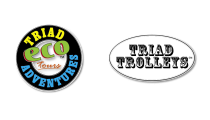What Is The Right Stand Up Paddleboard For You?

Selecting your first standup paddleboard (SUP) is all about YOU.
The same way buying your first bike may be.
What is your height? What is your weight? What is your skill (have you had lessons)? Where will you be paddling? How many months or years do you wish to use the SUP?
Surprisingly, some folks discard their paddleboard after their first week of using it. They find it hard to steady themselves on the board because it is so flimsy. Or, so thin that the first “ding” allows it to suck in water making it too heavy to handle. Or, what arrived in the mail was just 2” thick instead of the needed 6”. Or, not enough fins for your Oceanside waves. Or, it popped “open” after the 3rd time using it, yikes!
But every SUP likely has a purpose (some just to anchor on your fence as yard art), and yours will be no different. In reality, a “correct” paddleboard really should be one you get out of your garage as often as possible. Your local personable shop is your best resource for service, pricing, and overall selection. For paddle-boards, it might be that local entity that specializes in just standup paddleboards. Sit-down kayaks are so very, very different.
In any case, “anything worth having is worth maintaining” (an ex once reminded me). And your paddleboard is no different.
There are many differences in the type of paddleboard you plan to buy. But, that is a good thing!
Hull Type
The two basic types are planing and displacement hull. Planing hulls are flat, wide, and stable. Displacement hulls are typically longer, taller, and tipsy. There are many assorted designs, features, and materials available between the two types.
Planing Hulls
These are best for beginners and those just learning to use a SUP. Little people can be placed on any size, while the larger folks will require the wider sizes. The stability planing hulls offer are better for “SUP Yoga” and “SUP with your Pup”. Planning hulls are also easy to maneuver.
Displacement Hulls
Displacement hulls are usually faster. They are great for longer touring, racing, or aggressive fitness paddling. These SUPs travel a bit more on the top of their water, pointed straight ahead.
Material Type
Today’s paddleboards are manufactured with much lighter materials. Some are made using mixtures of fiberglass, epoxy, carbon, bamboo, hybrid plastics, and rubber.
Made in the USA.
There are not many SUPs in production in the United States. Custom shops can make custom boards. Two USA production manufacturers are “Glide” out of Utah and “Bounce” out of California. Both offer strong family and fleet boards with durable compositions that take abuse better than most.
Inflatable Paddleboards
These are flexible, convenient, and very capable of performing. Each inflatable SUP will be remarkably different from the other. What they have in common is that you fill them with air using either a hand pump or an electric pump. They usually come with a back-pack for carrying.
You can get them as a “bare bones” board or loaded with features.
Hard Boards
Some hard boards are quite lite and fragile. Others, not so much. Most are typically imported with a variety of layers including fiberglass, epoxy, and artwork. Again, lots of variety, design, lengths, widths, features, and graphics available. In the end, you choose!
Features
Good golly, there are many! These depend on everything we have listed at the top of this article. The more time
you actually spend on the water the more you will know what you
like and need. The better you get, the more your SUP “wish list” will change.
-
D-rings. Less is more, or is it for you? Mighty convenient at times.
-
Bungie. What are you hauling? Front or rear, or both?
-
GoPRO. Connections always helpful. Some suction cup options too!
-
BAGS. Protection for your investment and hauling convenience.
-
Leash. A must! It saves lives. Connect to ankle, thigh, or waist?
-
Handle. Every board has one, at least. Pop up, strap, or grip?
-
Rack Pads. How are you hauling? Simple affordable protection.
Fins
Every board will come with one, or more. And in different heights and depths. They also come in different materials such as rigid, flexible, etc. Fins provide direction and drag. Which, is what you want when on a wave. On rivers with rock beds, long fins won’t work well.
So, if you’re just getting started with paddleboarding, it’s best to take a lesson with a professional. Even if you have experience paddleboarding, you will likely gain several nuggets of gold on the land and on the water. Whether you prefer SUP for race or leisure, safely enjoy every minute you can on the water!
For more information on our PaddleFit SUP Events, give us a call at 336-722-7777. We also post our schedule on our Facebook page!
